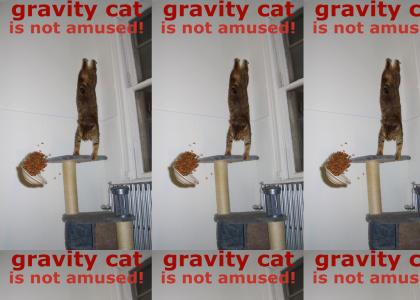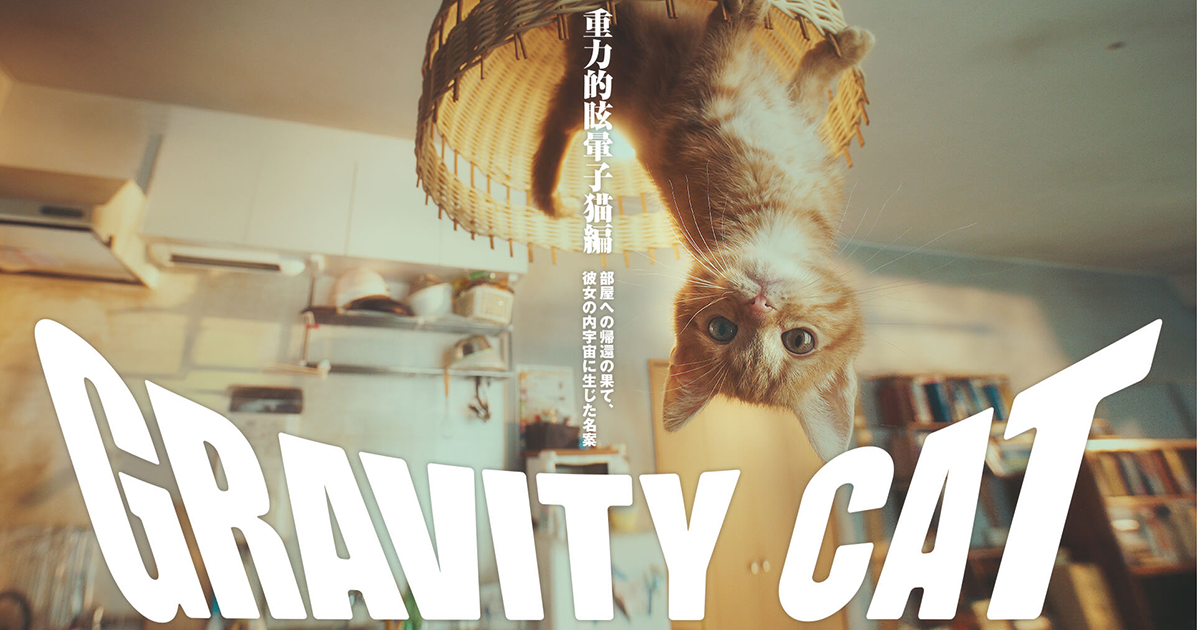
Upon his death, Ham the chimpanzee was eulogized, and his partial remains sent for burial at the International Space Hall of Fame, and at least two monuments have been constructed in memory of Laika the dog. A few months after her return, she was euthanized so that the scientific team could examine her brain.ĭespite Félicette’s scientific contributions, this intrepid feline has been mostly erased from history, Weitering wrote for in 2017, when Guy’s Kickstarter campaign first debuted. Eventually, the capsule that contained Félicette detached from its rocket and parachuted safely back to the ground.
#CATS IN NO GRAVITY SERIES#
But all the while, scientists kept close tabs on the kitty, monitoring her breathing and heart rate through a series of electrodes implanted throughout her body. The trip was brief, just 15 minutes in total. That October, Félicette-then designated C341-was launched from a base in the Sahara Desert, reaching an altitude of about 100 miles above Earth. This bronze statue, designed by sculptor Gill Parker, depicts Félicette the cat perched atop planet Earth. After researchers at the Centre d'Enseignement et de Recherches de Médecine Aéronautique (CERMA) recruited 14 cats into a rigorous training program, Félicette-a sweet-tempered former stray-was granted the golden ticket, Emily Petsko reported for Mental Floss in 2018.
#CATS IN NO GRAVITY TRIAL#
These efforts, using larger and larger creatures, were-though ethically hazy-intended as trial runs for humans, in part to study the effects of microgravity on mammalian bodies.īefore Félicette, France had so far only sent rats to space. In their early bids for an eventual lunar landing, both the United States and the former USSR sent their own menageries of creatures into space, including a dog named Laika in 1957 and a chimpanzee called Ham in 1961. “It's time for The Astrocat to get the memorial she rightly deserves,” Guy wrote on the original campaign page.įélicette, a petite tuxedo kitty, wasn’t the first non-human animal to leave our planet’s atmosphere. More than 1,100 patrons donated $57,000 to honor Félicette. Unveiled in December, the memorial is the culmination of a Kickstarter campaign launched in October 2017 by cosmic cat enthusiast Matthew Serge Guy. The spacefaring feline was part of a 15-minute suborbital mission in 1963. So over to you, cat owners.Félicette, the only cat to have ever survived a sojourn into space, is now being recognized for her extraterrestrial achievements in the form of a bronze statue at the International Space University in Strasbourg, France. Then, of course, there's The Buttered Cat Paradox, which Miss Cellania discussed in great detail last year. Another is that the greater height gives the cat time to adopt its parachute pose.įor those of you who enjoy physics, the “falling cat problem,” as it’s called, has been parsed in diagrams and technical language in online dissertations such as “Gauge Theory of the Falling Cat” and the Monty Python-ish sounding “Aerial Righting Reflexes in Flightless Animals.” As any stuntman can tell you, relaxed limbs are less likely to break than unrelaxed ones.

Why? One theory is that after a certain distance, a cat reaches maximum speed and that vestibular mechanism in its ear shuts off. What’s remarkable is that the study found that cats that fell from heights of 7 to 32 stories were less likely to die than those that fell from 2 to 6 stories.

Of those, more than one-third needed life-saving treatment, while just under a third required no treatment. 90% of them survived, though most sustained serious injuries.

In 1987, veterinarians at New York City’s Animal Medical Center did a study of felines that had fallen from tall buildings. It’s the same kind of maneuver that flying squirrels do in mid-air.īut as amazing as their gravity-defying abilities are, cats are not invincible. Like many small animals, they have a low body-volume-to-weight ratio, which when falling, allows them to slow their velocity by spreading out and becoming their own parachute. So when a cat falls, its senses respond with lightning speed, and it is able to reorient its body and twist its head around so it can see where it’s going to land.īeyond their amazing aerial spins, cats also have what could be called a built-in parachute. Second, cats have a unique skeletal structure - an unusually flexible backbone and the absence of a collarbone. A vestibular apparatus in their inner ear acts as a balance and orientation compass. How does the righting reflex work?įirst, cats have supersensitive sense organs. There’s even a name for this phenomenon: the “righting reflex.” Animal experts say that the righting reflex is observable in kittens as early as three to four weeks, and is fully developed at seven weeks.

The purpose of both of these videos was to demonstrate the cat’s unique innate ability to reorient its body during a fall.


 0 kommentar(er)
0 kommentar(er)
